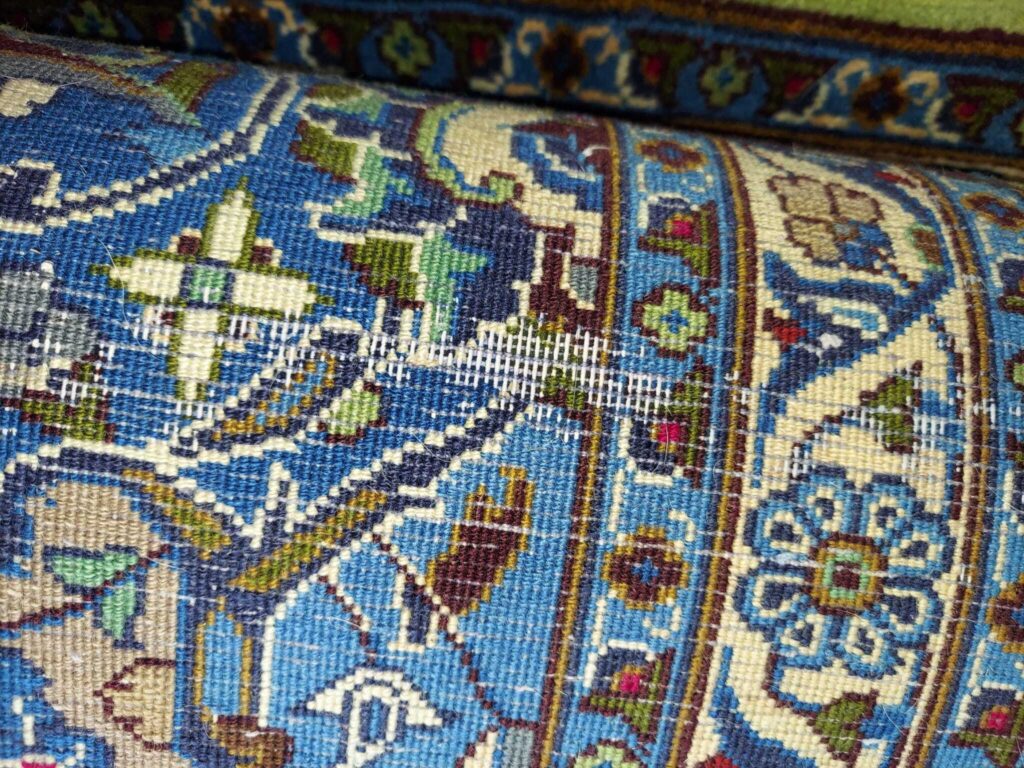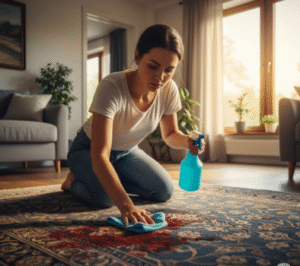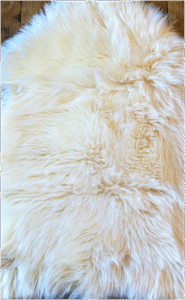Moths are one of the most persistent and destructive threats to rug owners. Whether you own a valuable Oriental heirloom or a cozy wool area rug, these pests can cause irreversible damage if left unchecked. Moth infestations are often silent, progressing in hidden, dark spaces, making early detection and prevention essential.
This guide will cover everything you need to know about moth infestations, including identification, prevention, treatment, and long-term protection strategies. By following these steps, you can safeguard your rugs and keep them in pristine condition for generations.
Understanding Wool Moths: Life Cycle, Habits, and Risks
What Are Wool Moths?
Wool moths, also known as clothing or carpet moths, are small insects that primarily feed on natural fibers such as wool, silk, fur, and feathers. The true culprits behind rug damage are their larvae, which devour fibers to fuel their development. Understanding their life cycle is key to stopping them. Read more about different rugs in this “Rugs Vocabulary.”

The Moth Life Cycle
- Egg Stage
- Female moths lay tiny, white eggs in dark, undisturbed areas, such as deep within rug fibers or underneath furniture.
- Eggs hatch in 1–4 weeks, depending on temperature and humidity levels.
- Larvae Stage
- Small, cream-colored worms with segmented bodies emerge, feeding voraciously on rug fibers.
- The larvae spin silk webbing and can remain in this stage from 3 weeks to several months, depending on environmental conditions.
- Pupa Stage
- The larvae encase themselves in cocoons to transform into adults, a process that takes 8–25 days.
- Warmer temperatures speed up this transformation.
- Adult Stage
- The adult moths are small, golden-colored insects with long antennae.
- They do not eat; their sole purpose is to reproduce. A single female can lay 40–200 eggs daily, perpetuating the infestation cycle.
Why Moths Target Rugs
Moths are drawn to rugs for several reasons:
- Natural fibers– Wool, silk, and other animal-based materials contain keratin, a protein larvae need for growth.
- Dirt and stains– Food spills, sweat, oils, and pet hair provide extra nutrients for larvae.
- Dark, undisturbed areas– Rugs under furniture, in closets, or in storage are prime targets.
- Humidity– Damp environments (e.g., basements, garages) accelerate moth development.
Spotting a Moth Infestation: Early Warning Signs
Moth infestations can be difficult to detect early, but watch out for these key signs:
- Bald patches or thinning areas on your rug.
- Silky webbing or cocoons on the rug’s underside.
- Tiny golden moths flying near closets, basements, or rugs.
- Cream-colored larvae or clusters of eggs hidden within rug fibers.
How to Prevent Moth Damage: 8 Proven Strategies
- Vacuum Regularly
- Vacuum rugs weekly, paying special attention to edges, corners, and underneath furniture.
- Use a crevice tool to reach hidden areas.
- Professional Cleaning
- Deep-clean rugs every 1–2 years to remove larvae, eggs, and food residue.
- Heat treatments (above 120°F) during professional washing effectively kill eggs.
- Proper Storage
- Never store dirty rugs. Clean them thoroughly before storage.
- Wrap rugs in breathable, acid-free paper instead of plastic.
- Add natural repellents like cedar blocks or lavender sachets.
- Use Rug Pads
- Elevate rugs with breathable rug pads to improve airflow and deter egg-laying.
- Control Humidity
- Use dehumidifiers in damp areas like basements.
- Ensure rooms are well-ventilated to discourage moth breeding.
- Rotate Rugs
- Move rugs every 3–6 months to disrupt moth habitats.
- Inspect Second-Hand Items
- Check used rugs, furniture, and clothing for eggs or larvae before bringing them home.
- Apply Safe Repellents
- Magnesium hexafluorosilicate alters fiber pH, making rugs unappetizing to moths.
- Avoid mothballs—they are toxic and ineffective in open spaces.
Treating an Active Infestation: Step-by-Step
- Isolate the Rug
- Remove the rug from the room to prevent spreading larvae.
- Professional Cleaning
- Heat cleaning or freezing (-4°F for at least 72 hours) effectively kills eggs and larvae.
- Use Pyrethrum Spray
- A natural insecticide derived from chrysanthemums.
- Test on a small area before applying to both sides of the rug.
- Clean Your Home
- Vacuum floors, baseboards, and furniture where the rug was placed.
- Replace rug pads and wash nearby fabrics.
- Monitor with Traps
- Place pheromone traps to catch adult moths and track activity.
Debunking 3 Common Moth Myths
1. Myth: Adult moths eat rugs.
- Truth: Only larvae cause damage; adults focus on mating.
2. Myth: Mothballs are a foolproof solution.
- Truth: They’re toxic, ineffective in open spaces, and don’t kill eggs.
3. Myth: Moths only infest dirty homes.
- Truth: Clean rugs can still attract moths through open windows, vents, or secondhand items.
Special Tips for Oriental & Delicate Rugs
- Rotate wall-hung rugs– Moths can infest vertical surfaces, too.
- Balance light exposure– While sunlight deters moths, excessive exposure can fade dyes.
- Schedule professional inspections– Experts can identify hidden infestations before severe damage occurs.
Also Read: Oriental Rugs, the Works of Art
When to Call a Professional
Consider professional help if:
- The infestation is severe, with widespread damage.
- You own valuable or antique rugs requiring specialized care.
- Moth issues persist despite preventive measures.
Final Thoughts: Stay Vigilant!
Moths are stealthy, but consistent care keeps them at bay. Regular cleaning, proper storage, and environmental control are essential to protecting your rugs. At the first sign of trouble, act fast—early intervention can save you time, money, and stress.
Need More Help?
Got a squad of moths throwing an all-night rave in your rug? Don’t worry—Ask the professionals! at Rug Journal. We’ll help you shut down their party, kick them to the curb, and make sure they never come back for an encore! 🎤✨




